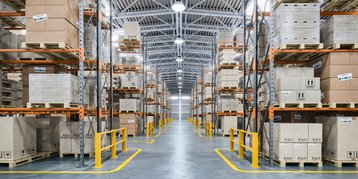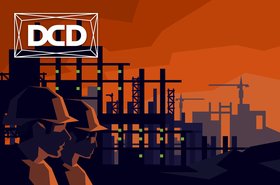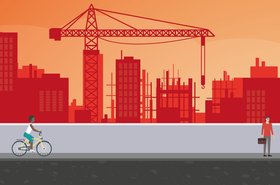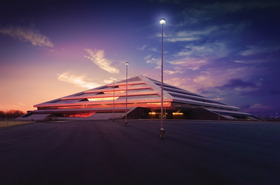Covid-19 was hard on most businesses, but a few sectors have seen demand flourish. The need for both data centers and retail warehouses & fulfillment centers increased during Covid-19, putting them in direct competition.
More shopping online means more data centers are needed to process orders, recommend products, handle shipping and supply chain logistics. It also means more physical space to hold and process stock is needed. But as land becomes scarce at some point the cycle of continuous growth becomes unsustainable.
As demand for space in both sectors increases the market for suitable land becomes more acute, driving up prices and forcing both industries to either pay more, look elsewhere, or adapt their sites to eke out more value.
Data centers and retail warehouses are mirror industries boosted by Covid-19
Data centers and retail warehouses share many similar qualities; they need large amounts of space near population hubs with easy access to access to power and infrastructure. And as both sectors continue to see sustained growth driven by changing habits and increased online activity, they inevitably will start to see increased competition for declining amounts of space.
Whether cloud or colocation, increasing digitization has seen a sustained boom in data centers being built in recent years. And despite a 10 percent decline in data center spending in 2020 due to restricted cash flow during the pandemic, Gartner predicts that the data center market is still expected to grow year-over-year through to 2024.
The analyst firm estimates spending on data center infrastructure will grow six percent in 2021 to reach $300 billion. The continuing shift to cloud computing, plus the growth in remote working, streaming, video calls, and other online activities during the Covid-19 pandemic has only fueled the demand for computing capacity higher.
“We just continue to see big cloud companies building new data centers, buying new land, taking down large colocation contracts, speculatively trying to keep land off the market and really getting ahead of the next year,” says Andy Cvengros, SVP at JLL. “And they seem to not be able to keep up.”
At the same time, many of those same trends are driving a growing demand for space to store and process all the orders people now make online. For each $1 billion growth in e-commerce sales, an additional 1.25 million sq ft (116,000 sq m) of distribution space is needed to support that according to CBRE. Rather than many small stores, retailers are increasingly looking for large-scale facilities close to population hubs from which they quickly ship large numbers of goods to consumers.
“A lot of these markets, they also are big industrial markets where you see last-mile shipping coming much closer,” says Cvengros. “Big online retailers who are doing the same-day or next-day shipping are taking out just vast amounts of industrial space which also make great data center sites.”
A fulfillment center prophecy
Despite retail businesses and store-fronts going out of business to the pandemic, the move to shop online means the industrial real estate has survived Covid-19 unscathed. And as buying habits change so does the real estate footprint for retailers, with many are more likely to turn to large warehouses rather than fill small vacant lots previously owned by rivals pre-Covid. CBRE says retail-to-industrial property conversions are accelerating across the US, and are being driven by the growth of e-commerce. Prologis estimates a five percent increase in inventory levels would require an additional 300 million sq ft (28 million sq m) of industrial space, while JLL predicts demand for industrial real estate could rise by an additional 1 billion sq ft (93 million sq m) 2025.
“If an industrial developer throws up a 200,000 sq ft (18,500 sq m) shell building that's brand new and has easy access to power, it makes a great data center, but it also makes a great industrial development as well,” says Cvengros.
And that competition is growing. The trend toward online shopping has been accelerating for a number of years, but Covid-19 fueled it even further. McKinsey reports around 30 percent growth in online retail in the US in 2020, increasing the demand for warehouse space even higher with it. CBRE expects growth of e-commerce to continue in 2021 (though at a slower rate) and into 2022, and predicts there will be demand for 333 million sq ft (3.1 million sq m) of new industrial space in the US over the next two years.
“It's been a rush or land grab to get good sites that get good power have access to fiber on both in industrial and on the data center side of things,” says Cvengros. “And you're seeing that across all the major markets.”
It’s not just the US seeing growth in online sales and warehouse demand. In the UK, ONS estimates online retail in 2020 rose by 60 percent compared to 2019. At the same time, Colliers called 2020 a “historic year” for industrial real estate with record demand and low supply, driven by online sales. Take-up for distribution warehouses in 2020 topped 34 million sq ft (3.1 million sq m). The average deal size reached a new record at 310,000 sq ft (28,800 sq m) compared to an average of 250,000 sq ft (23,000 sq m) for most of the last seven years. Saville’s has published similar findings, saying that warehouse takeup in 2020 was 80 percent higher than the long-term average, fuelled by e-commerce as well as Brexit and the need to store more locally. PwC has reported similar increases in mainland Europe.
“Where data center operators move slow, industrial operators move very quick. And so what we've seen is a number of properties that have been in favor of going data center or would make great data center sites have actually been taken by these big online retailers as long term leases.”
Chicago a microcosm of the global tussle for land between retail and data center
CBRE listed Chicago as one of the main hubs for retail-to-industrial property conversions, while simultaneously seeing a large influx of data centers and retail warehouse deals. The area is a microcosm of the competition for land between retail and data centers going on globally.
Chicago has long been a notable but relatively small data center market when compared to a hub like Virginia, but the market has picked up in the last 12 months. NADC reports that 2020 was Chicago’s strongest year for colocation leasing, with more than 45MW leased by Microsoft alone.
“Look at historical absorptions in a town like Chicago where we've seen 25 to 30MW a year [being leased for data centers], and recently a single user has come in and done 60MW,” says Cvengros. “Just astronomical stuff in terms of overall absorption that really changes the supply and demand structure with some of the providers, and thereby drives further interest from the big operators who are looking to have the cloud companies as future tenants.”
At the same time, the retail warehouse market has exploded. Last year investment firm GCP paid $42 million for a 316,550 sq ft (29,400 sq m) warehouse leased by Amazon for retail space, with the $132 per square foot price tag making it one of the most expensive industrial sales in 2020 in the city. In December KKR was reportedly close to signing an $800 million agreement for 100 properties across Atlanta, Chicago, Dallas, and Baltimore, in addition to the $260 million it paid for two distribution properties in Chicago and Charlotte, NC, totaling 2.5 million sq ft (232,000 sq m). Meanwhile, Amazon, the 800-pound gorilla in both sectors, leased or bought around 6 million sq ft (557,000 sq m) in 2020 in the Chicago area alone just for retail warehouses.
“The major corridors for data center space are calling Elk Grove and Franklin Parks,” explains Cvengros. “Those same areas are also the core industrial sectors for the area as well; they're next in the airports, they are heavy industrial areas with high amounts of power.”
“What you've seen is a lot of those industrials used to be down by Joliet, like an hour outside of town in these million square foot facilities, and big online retailers have come in and taken down several million square feet of industrial space [locally] in just the past two years.”
And inevitably, competition for scarce resources like suitable land and facilities has driven up prices dramatically.
“With tight markets like that there's just not a lot of opportunities, so you're seeing a very competitive approach when buildings that come on the market,” says Cvengros. “Land prices have gone from $17 a foot three years ago to where you’re now seeing stuff getting traded at $25-30 per foot, so pretty huge increases in market value.”
Ongoing turf war means data center firms will have to pay more, build higher, or move out
Chicago is, however, just one city where this is happening, and this is a trend replicating itself across the world. And as a result, data center firms, especially colocation providers, may have to rethink some of their plans.
“From a colocation standpoint, it's really hard to get compressed on your colocation rates, but also pay more for land,” says Cvengros, “Land rates are going up, you're seeing more two-story data centers where people trying to get more out of the land that they're buying, and then also growth beyond the kind of called ground zero of the targeted areas.”
“We're seeing that Ashburn; people are looking at different areas like Manassas and south of the airport, and they're seeing acreage going at $1-1.5 million to an acre, and just continuing to climb.”
Multi-story data centers are a trend that’s been accelerating in recent years beyond the urban metropolises of New York, London, and Singapore. While they allow for more capacity on-site, they provide extra construction and logistical challenges around having additional weight as well as power & cooling requirements being spread across multiple floors.
It’s not all doom and gloom, however. It’s potentially easier for retailers to utilize multi-story facilities due to the cost-benefits of proximity, meaning in a crunch they might be more likely to build up rather than look for new sites and leave available space that is slightly further away from urban hubs. And while there is strong competition, Cvengros says many industrial developers often prefer data center tenants over retail because they are willing to pay more and sign on to long-term leases.
“The developers are getting keen on the data center industry and saying, ‘they're pretty hard deals to get done, but I'll take my chances’ and try to get something like that done.”
Register for DCD>Magazine, the industry's foremost publication for all things data center





